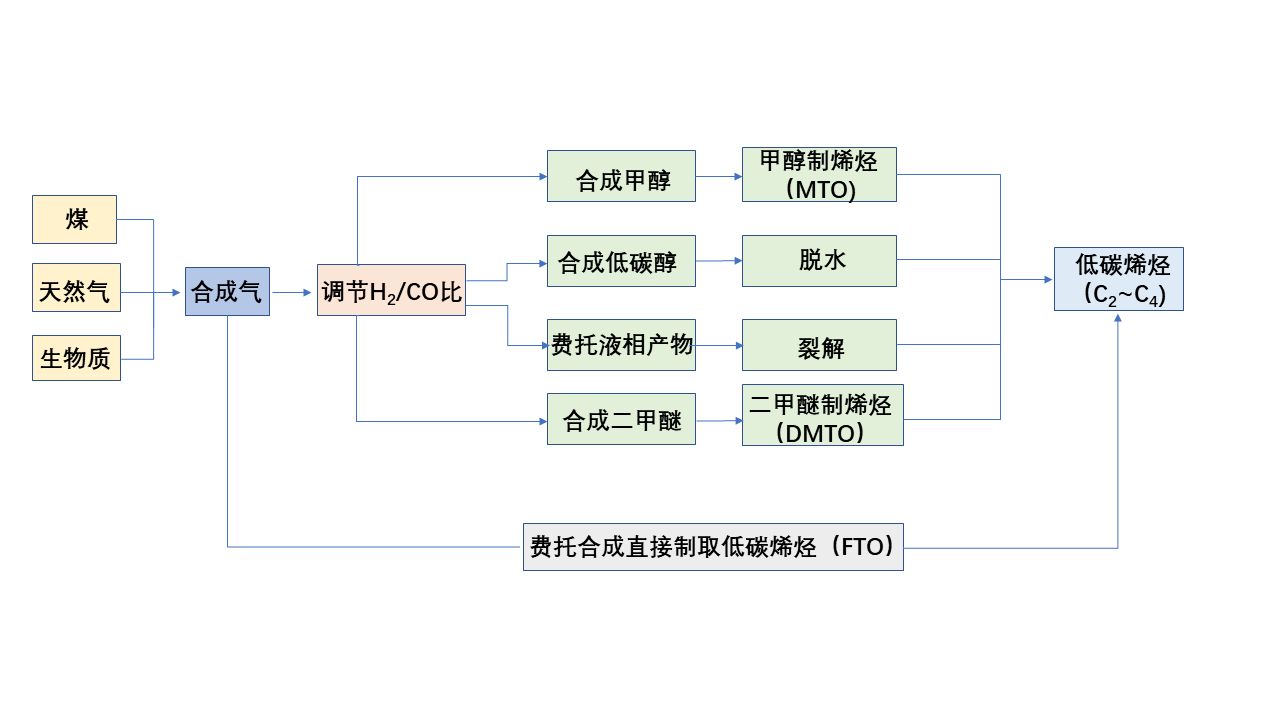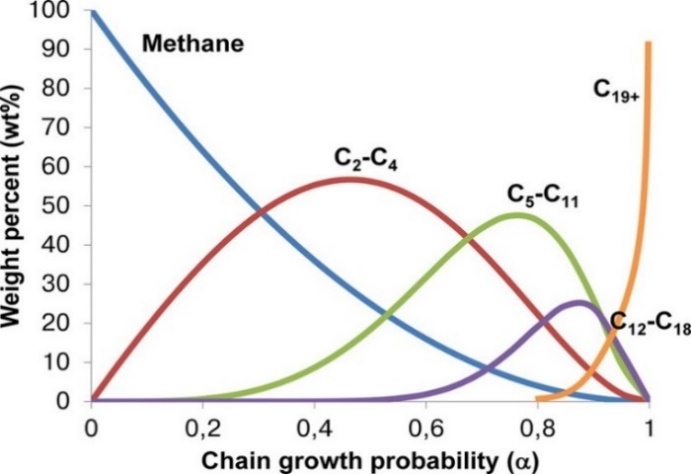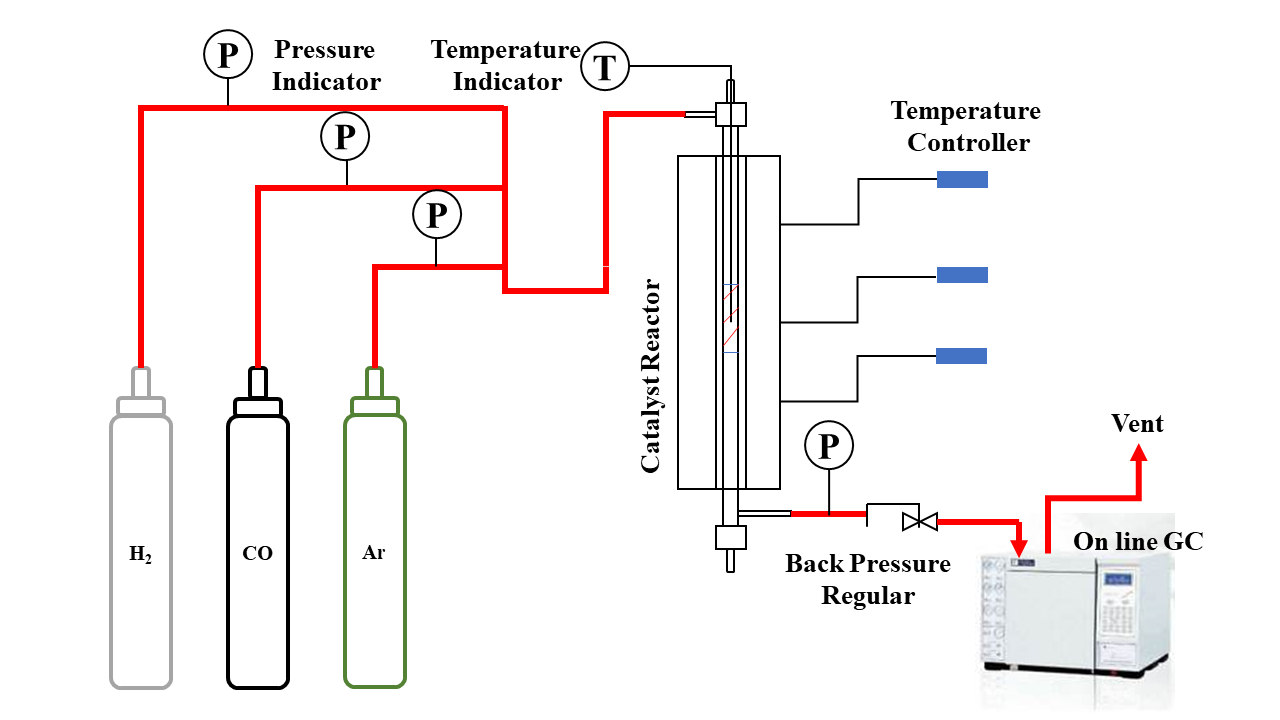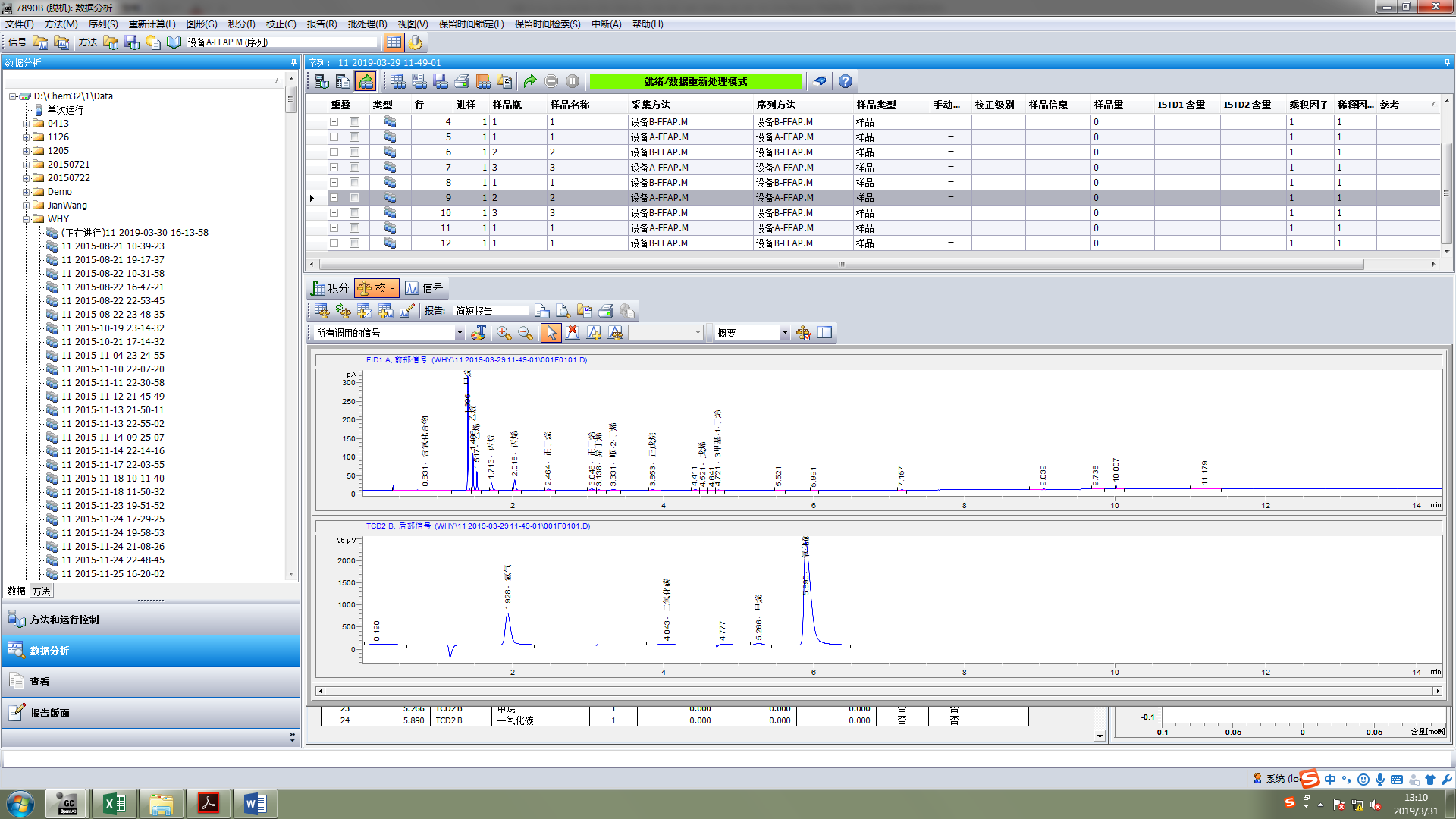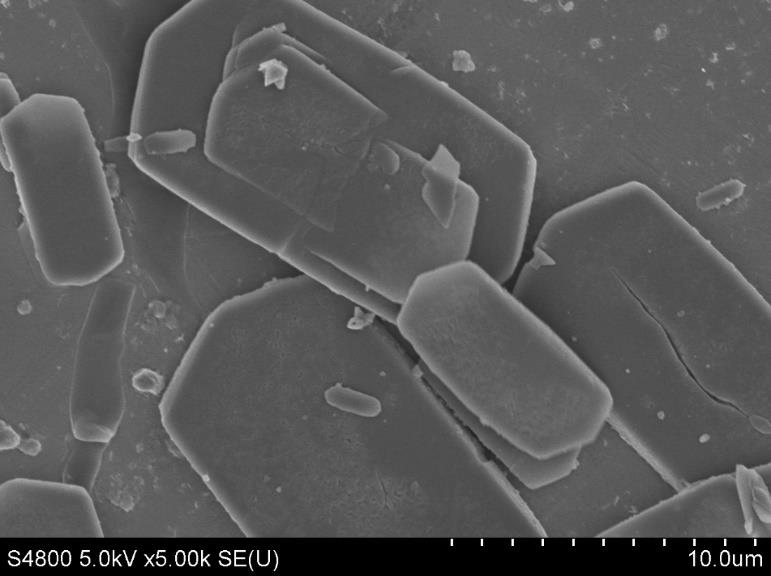Fe-N-C纳米层状材料在费托合成中的应用毕业论文
2020-04-21 16:58:21
摘 要
原油资源的枯竭和环境问题推动了全世界寻找低碳烯烃的替代生产工艺,费托合成作为一种将非石油来源的合成气直接生产关键化学品的工艺受到广泛关注。为保证我国能源安全,大力发展以煤、生物质等为原料生成合成气通过费托合成制取大宗化学品,对促进国民经济发展具有重大的战略意义。
本文通过Fe修饰金属有机骨架(MOF),以此作为催化剂前驱体,制备出的Fe-N-C纳米层状材料应用于费托合成直接制取低碳烯烃反应,并通过调控不同焙烧温度,考察焙烧温度对催化剂相态、形貌、结构的影响,并结合反应性能总结出相应的构效关系。
最终结果表明,通过热解Fe修饰的MOF材料的方法制备催化剂有助于活性组分的还原和碳化物的生成,FTO反应中大部分的Fe组分生成了Fe5C2晶相,且该物相在反应过程中能够稳定存在。在一定反应条件下,适宜的催化剂热解温度下(800 ℃),催化剂结构稳定。此热解温度下催化剂的反应活性最佳,低碳烯烃选择性达到了15.1%。
关键词:低碳烯烃 费托合成 MOF Fe-N-C 热解温度 Fe5C2
Application of Fe-N-C nano-layered material in Fischer-Tropsch synthesis
ABSTRACT
The depletion of crude oil resources and environmental issues have driven the world's alternative production processes for lower olefins, and Fischer-Tropsch synthesis has received widespread attention as a process for the direct production of key chemicals from non-petroleum-derived syngas. In order to ensure China's energy security, it is of great strategic significance to promote the development of the national economy by vigorously developing synthetic gas using coal and biomass as raw materials to produce bulk chemicals through Fischer-Tropsch synthesis.
In this paper, Fe-modified metal-organic framework (MOF) was used as a catalyst precursor. Fe-N-C nano-layered materials were prepared by Fischer-Tropsch synthesis to directly produce lower olefins. The calcination was investigated by controlling different calcination temperatures. The effect of calcination temperature on the phase, morphology and structure of the catalyst was combined with the reaction properties to summarize the corresponding structure-activity relationship.
The final results show that the preparation of the catalyst by pyrolysis of the modified MOF material contributes to the reduction of the active component and the formation of carbides. Most of the Fe components in the FTO reaction lead to the formation of the Fe5C2 crystal phase, and the phase can be stably present during the reaction. Under certain reaction conditions, the catalyst structure is stable under the suitable pyrolysis temperature (800 °C). The catalyst has the best reactivity at this pyrolysis temperature, and the selectivity of the lower olefins reaches 15.1%.
Key Words: lower olefins; Fischer-Tropsch synthesis; MOF; Fe-N-C; pyrolysis temperature; Fe5C2
目 录
摘 要 І
ABSTRACT Ⅱ
第一章 绪论 1
1.1 课题背景 1
1.1.1 低碳烯烃概况 1
1.1.2 低碳烯烃的合成 2
1.2 合成气制低碳烯烃 3
1.2.1 研究现状 3
1.2.2 费托合成制低碳烯烃的产物分布 4
1.2.3 费托合成制低碳烯烃催化剂的研究状况 5
1.3 费托合成制低碳烯烃铁基催化剂的研究 6
1.3.1 铁基催化剂活性相的研究 6
1.3.2 载体与助剂效应 7
1.3.3 金属有机骨架衍生的铁基催化剂的提出及其优势 8
1.4 本论文选题的意义及研究内容 9
1.4.1 本论文选题的意义 9
1.4.2 本论文的研究内容 9
第二章 实验部分 11
2.1 实验准备 11
2.1.1 原料和试剂 11
2.1.2 实验仪器 12
2.2 实验步骤 12
2.2.1 金属有机骨架材料Zn MOF的合成 12
2.2.2 催化剂Fe-N-C材料的制备 13
2.3 催化剂性能评价 13
2.3.1 催化剂评价装置 13
2.3.2 催化剂评价过程 15
2.3.3 催化剂产物定量分析 15
2.4 催化剂的表征 16
2.4.1 X射线衍射光谱(XRD) 16
2.4.2 场发射透射电子显微镜(TEM) 16
2.4.3 场发射扫描电子显微镜(SEM) 17
2.4.4 比表面积及孔结构分析 17
2.4.5 X射线光电子能谱(XPS) 17
2.4.6 电感耦合等离子体发射光谱仪(ICP-OES) 18
第三章 Fe-N-C催化剂的构建及焙烧温度的考察 19
3.1 引言 19
3.2 Fe-N-C催化剂的表征 19
3.2.1 SEM的表征结果 19
3.2.2 N2吸脱附的表征结果 20
3.2.3 XRD的表征结果 22
3.2.4 TEM的表征结果 23
3.2.5 XPS、ICP-OES的表征结果 26
3.3 催化剂的活性评价 27
第四章 结论和展望 30
4.1 结论 30
4.2 展望 30
参考文献 32
致谢 35
第一章 绪论
1.1 课题背景
1.1.1 低碳烯烃概况
低碳烯烃,一般是指含碳数为2~4的烃类化合物,主要包括乙烯、丙烯和丁烯,是化工行业的重要组成部分。低碳烯烃作为最基础的化学品,其下游应用十分广泛,可用于生产如聚乙烯、聚丙烯、乙醇和环氧乙烷之类的有机化合物,也可进一步合成塑料、高聚纤维等精细化工产品。
乙烯是分子组成最简单的烯烃,是一种无色稍有气味,密度略小于空气的气体。乙烯是三大合成材料的基本原料,是石油化工产业的核心,是全球最大的化学需求产品之一,主要应用于塑料行业,生产如聚乙烯、聚氯乙烯和聚苯乙烯等产品[1]。商业乙烯的生产主要基于各种烃原料的蒸汽裂化。在欧洲和亚洲,乙烯主要来自石脑油,瓦斯油和冷凝物的裂化,而在美国,加拿大和中东,乙烯是通过乙烷和丙烷的裂解产生的。石脑油裂解是全球乙烯的主要来源。
相关图片展示:
